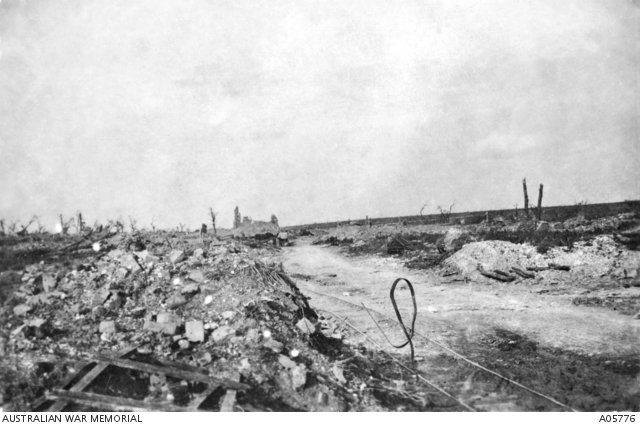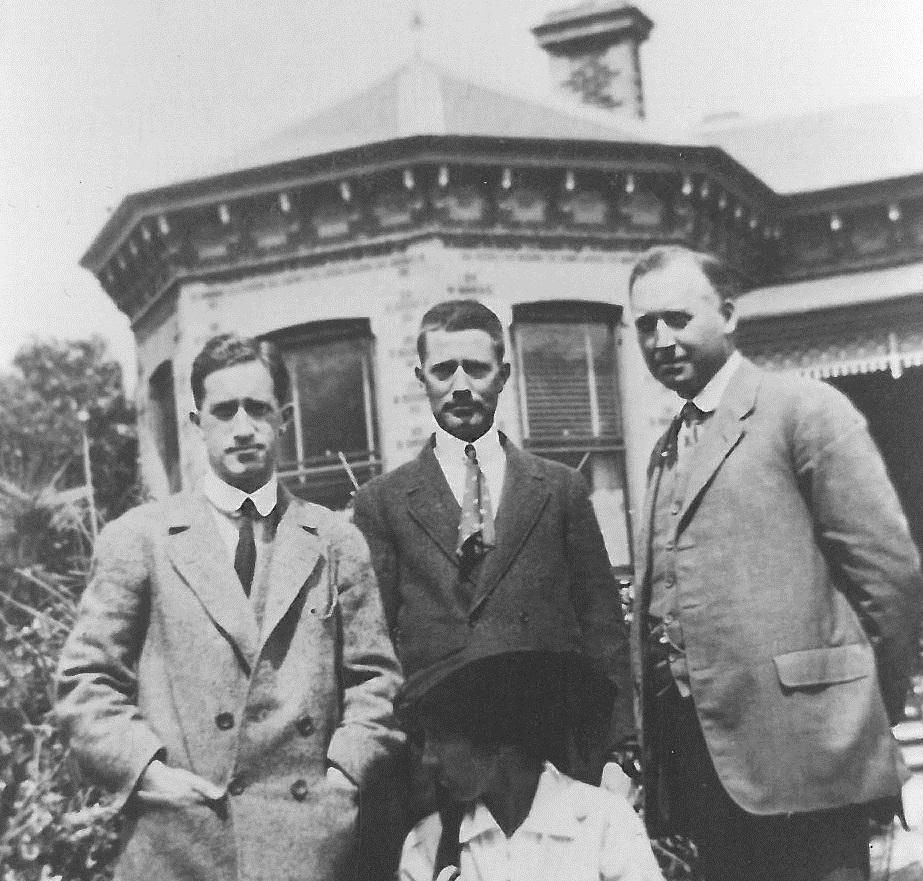Pozières
When Australian war correspondent Charles Bean witnessed the devastation on the Western Front during 1916 he considered that a memorial was needed at home in Australia to commemorate those who had died. Several months after the fighting at Pozières, Bean returned to retrace the battle and collected the first relics for what would eventually become the Australian War Memorial.
Leslie Bowles, E.J. Gregory, Frank Lynch, and Louis McCubbin, Pozieres, 1928.
By the time the Australians arrived on the Western Front in 1916 the French, British, and Germans had been fighting for almost two years. The allies planned to launch a large-scale offensive in the Somme region of northern France, but when the Germans launched their own major operation against the French at Verdun the British were left to conduct the battle of the Somme with reduced French assistance.
Intended in part to divert the German army’s attention from Verdun, the Somme offensive included the fighting around Pozières, which dominated the high ground in the British advance towards Thiepval. There the 1st, 2nd, and 4th Australian divisions wrested a small, devastated area from the enemy, but at a staggering cost. Over 42 days the Australians made as many as 19 attacks against the German positions. The final casualties totalled an appalling 23,000 men killed, wounded, or taken prisoner. The losses sustained throughout that exhausting period were almost unsustainable for a volunteer army.
The high ground at Pozières was an essential advantage, and a place from which further attacks could be launched. The 1st Division was the first to go into the battle, and did so on 23 July 1916. The Australians managed to capture the village of Pozières, whereupon they were subjected to relentless artillery bombardment that reduced the village to rubble and inflicted a heavy toll among the allied troops. The 2nd Division relieved the 1st, and suffered even more losses attacking towards the heights east of the village. The 4th Division then went in, pressing its attack north towards Mouquet Farm and holding off German attempts to retake Pozières. Each of the three Australian divisions, though severely reduced, served a second tour on this notorious battleground.
A fragment of bell collected from the ruins of Pozières Church by James Alfred Bolton, 1 Australian Division.
The whole area was flayed and pounded into a veritable sea of shell-craters...
Charles Bean, Australian official First World War historian
The massive artillery bombardment from the Germans at Pozières inflicted a huge number of casualties among the Australians. Historian Peter Burness stated that “for several weeks Pozières became the focus of the Somme fighting and the worst place to be on earth”.
Of the 23,000 Australian casualties, 6,800 men were killed or died of wounds.
By the time the offensive was abandoned in November, it had resulted in around 500,000 German, 420,000 British and dominion, and 200,000 French casualties. The allied forces had advanced no more than 12 kilometres.
A pre-war photograph of Pozieres village looking north-east toward Bapaume, 1914.
The main street of Pozieres, December 1916. Now a mass of rubble, the town was destroyed in the fighting.
CASE STUDY
The Raws Brothers
Alec and Goldy Raws both experienced the horrors of Pozières. Their letters from 1915-16 provide an honest, insightful, and graphic account from a soldier's perspective.
Questions and activities
-
Referring to the two photographs above, what impact do you think the battles at Pozières had on the local citizens?
-
Compare this to how Pozières looks today (below). Can you find the memorial to the 1 Australian Division?
-
Did you know that a century on from the battle, in 2016, Australians helped to build a school in Pozières? Read the article (from the Sydney Morning Herald, 27 June 2015) for some information about Pozières today.
-
What can you find out about the town of Pozieres in Queensland?
-
Why did the German and allied armies fight so hard for control of Pozières?
-
In his diaries, Corporal Arthur G. Thomas wrote that it was “very nerve racking to be constantly under shell fire and horrors and dirt and filth”. His bewilderment at the mass death caused by the use of large-scale artillery barrages led him to ask: “Do the bloody artillery ever think of the infantry?”
For further reading, see the transcript of Corporal Thomas’ diaries.
Find out what you can about artillery. Why was artillery used so much on the Western Front?
-
What defences could be employed against artillery?
-
Is artillery an ethical weapon in war? Discuss.




